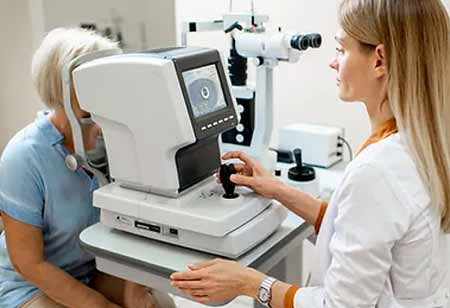Visionary Advances: Emerging Trends in Eye Care for the Future
Technological advancements, personalized care, and preventive measures are transforming the eye care industry, improving patient outcomes, and promoting better vision health for all ages.

By
Medical Care Review | Wednesday, February 12, 2025
Stay on top of your health and well-being with exclusive feature stories on the top medical clinics and treatment centers, expert insights and the latest news delivered straight to your inbox. Subscribe today.
Fremont, CA: Eye care is a dynamic discipline influenced by technological progress, shifts in patient demographics, and a focus on preventive measures. With a growing awareness of eye health, numerous trends are emerging that will define the future of eye care, affecting the diagnosis, treatment, and management of ocular diseases and the locations where care is provided.
The COVID-19 pandemic has fast-tracked telemedicine adoption in eye care, especially wherein providers reach out and follow up from patients' comfort. These are very beneficial to rural residents who could not access local treatment centers, often with specialists in the eye care sector. Telemedicine providers can obtain preliminary assessments, manage chronic conditions, and provide post-operative services so attention can be addressed promptly rather than coming in.
Advances in diagnostic technology are also changing the face of the eye. OCT and AI improve the accuracy of diagnosing eye diseases. This noninvasive optical imaging technique provides high-resolution cross-sectional retina images, allowing early detection of glaucoma, macular degeneration, and diabetic retinopathy. Simultaneously, AI algorithms are being developed to analyze retinal images and help diagnose ocular diseases accurately. These technologies enhance patient care and enable eye care professionals to make good decisions regarding the treatment of patients.
Personalized eye care is an increasingly important topic. The growth of new research on genetic factors affecting the eye continues to broaden its consideration in practice among eye care providers. Identifying genetic predispositions to certain eye diseases allows clinicians to customize individual patients' preventive measures and treatment protocols. Hence, such interventions are much more effective, and individuals proactively manage their eye health.
The future of eye care is a consultative-style and preventive approach to care, especially now that most people rely so much on digital devices with the growth of working remotely. This led eye care professionals to advocate for regular eye examinations and preventive measures. The patient's education includes the influence of blue light exposure on health and healthy habits such as the 20-20-20 rule, taking a 20-second break every 20 minutes to avoid digital eye strain and discomfort, eventually improving long-term eye health.
Among them is improved treatment for refractive procedures as well as cataract surgery. Some of these are femtosecond laser technology, which is used for the performance of refractive procedures, and cataract surgery, which increases precision levels while lowering recovery times. Innovative devices such as ICLs will offer alternative treatments for those patients who may not qualify for LASIK, ensuring that patients gain better treatments and improved visual results.
The aged population world over needs healthcare services to come closer to the specific needs of the elderly, who are quickly at risk of age-related conditions such as cataracts, glaucoma, and macular degeneration. This will align with establishing specialized clinics and programs for adequately managing these patients and improving their vision and quality of life.







